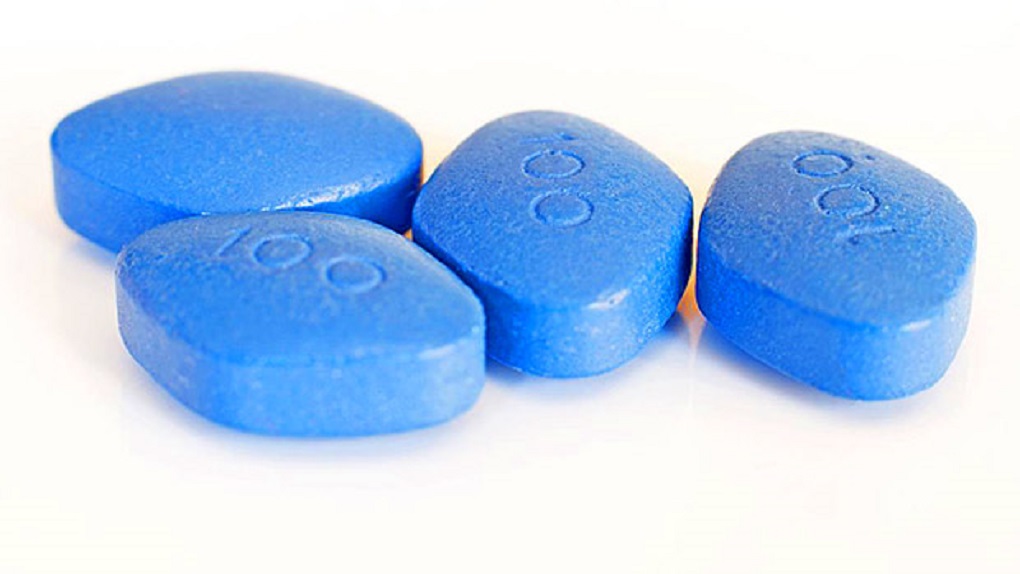The common cold is an acute, self-limiting viral infection of the upper respiratory tract primarily caused by rhinoviruses. With an estimated 1 billion cases annually in the United States, the common cold is an incredibly prevalent ailment, resulting in substantial economic impact due to lost workdays and healthcare expenditures.
While over-the-counter pharmaceutical interventions exist, these merely alleviate symptoms and do not shorten the disease’s course. In response, a growing number of individuals have been exploring natural remedies to manage symptoms and potentially accelerate recovery. This article reviews several scientifically-backed natural remedies for the common cold.
Echinacea
Echinacea is a group of herbaceous flowering plants in the daisy family, native to North America. Traditionally used by indigenous communities for various ailments, modern research has focused on its potential antiviral and immune-boosting properties.
A Cochrane Review of 24 randomized controlled trials found that Echinacea products might moderately reduce cold incidence and duration, especially when taken at the onset of symptoms. However, the study also highlighted inconsistencies in product types and dosages used, indicating the need for standardized preparations and further investigation.
Vitamin C
Vitamin C, or ascorbic acid, is a vital nutrient with potent antioxidant properties. Numerous studies have evaluated its effects on common cold prevention and treatment. A meta-analysis conducted by Hemilä and Chalker (2013) revealed that regular vitamin C intake did not significantly reduce cold incidence in the general population but did reduce cold duration and severity.
Moreover, for individuals under high physical stress, like marathon runners, vitamin C halved the risk of catching a cold. Thus, while vitamin C may not prevent colds in an average scenario, it may help lessen symptom severity and promote faster recovery.
Zinc
Zinc is an essential trace element involved in various physiological functions, including immune response. Several trials have assessed the efficacy of zinc in treating the common cold. A 2011 Cochrane Review of 15 trials involving 1,360 participants indicated that zinc administered within 24 hours of symptom onset could reduce cold duration and severity. However, adverse events, such as bad taste and nausea, were commonly reported, necessitating the careful consideration of risk-benefit ratios.
Honey
Honey, a natural sweetener produced by bees, has been used traditionally in many cultures for its antimicrobial and soothing properties. A study by Paul et al. (2007) found that honey was more effective than no treatment in reducing night-time cough frequency and improving sleep quality in children with upper respiratory infections. As honey is a safe and well-tolerated remedy, it presents an excellent natural alternative to over-the-counter cough suppressants, although individuals under the age of one should not consume honey due to the risk of botulism.
Probiotics
Probiotics, or beneficial bacteria, have been investigated for their role in promoting immune health. King et al. (2014) conducted a meta-analysis of 20 randomized controlled trials and found that probiotics, particularly strains of Lactobacillus and Bifidobacterium, could modestly decrease the incidence and duration of upper respiratory tract infections, including the common cold. However, results varied widely based on the strain, dose, and population studied, emphasizing the need for personalized probiotic regimens.
Garlic
Garlic has long been revered for its antimicrobial properties. A randomized, double-blind, placebo-controlled study by Josling (2001) showed that a garlic supplement significantly reduced the risk of catching a cold and, if infected, accelerated recovery and reduced the likelihood of recurrent infections. However, more large-scale, high-quality studies are required to confirm these findings.
While no natural remedy has been proven to cure the common cold outright, several options, including Echinacea, vitamin C, zinc, honey, probiotics, and garlic, have been scientifically demonstrated to reduce symptom severity and duration. However, it’s crucial to note that the effectiveness of these remedies varies significantly based on multiple factors, including the preparation and dosage used, timing of administration, individual health status, and the specific virus causing the cold.
As such, further research is necessary to establish standardized guidelines for their use. Always consult a healthcare provider before starting any new treatment regime. With continued research, natural remedies could play a more integral role in the management of the common cold, offering a well-tolerated and cost-effective complement or alternative to traditional pharmaceutical interventions.
The Science Behind the Common Cold: Viruses and the Immune System
The common cold, characterized by symptoms like nasal congestion, coughing, and sore throat, is a prevalent affliction globally, typically benign but inconvenient and discomforting.
Predominantly caused by rhinoviruses, understanding the science behind the common cold requires delving into the virology of these pathogens and our immune response against them. This article elucidates the viral mechanics of the common cold and the intricate defense mechanisms mounted by the human immune system.
Rhinoviruses: The Primary Culprits
Rhinoviruses, belonging to the Picornaviridae family, are the most frequent causative agents of the common cold, responsible for up to 50% of cases. They are non-enveloped, single-stranded RNA viruses with over 160 recognized serotypes, which explains the high prevalence and recurrence of cold infections, as immunity to one serotype does not confer protection against others.
Rhinoviruses primarily target the cells lining the nasal cavity and throat, known as the respiratory epithelium. They latch onto these cells via specific receptors (primarily ICAM-1), using their protein capsid to inject viral RNA into the host cell. This RNA hijacks the cell’s machinery to replicate, ultimately resulting in cell death and the release of new virus particles to infect neighboring cells.
The Immune Response: A Complex Defense Mechanism
The immune system responds to rhinovirus infection through a multi-faceted approach, involving both the innate and adaptive immune responses.
Innate Immune Response
The initial defense against rhinoviruses involves innate immunity, which acts rapidly but nonspecifically. Upon infection, epithelial cells and resident immune cells (such as macrophages) recognize viral components, leading to the production of proteins called interferons. These interfere with viral replication, signal to neighboring cells to increase their defenses, and attract more immune cells to the site of infection.
The innate immune response also triggers inflammation, causing increased blood flow, heat, and swelling—manifesting as the common cold’s familiar symptoms, such as a stuffy nose or sore throat.
Adaptive Immune Response
While the innate immune response is critical, it is the adaptive immune response, characterized by specificity and memory, that ultimately clears the infection. Specific immune cells called T cells recognize and kill virus-infected cells. Concurrently, B cells produce antibodies that bind to the virus, preventing it from infecting other cells and marking it for destruction by other immune cells.
Typically, after an infection, some of these T and B cells remain as memory cells. If the same virus is encountered again, these cells rapidly proliferate and mount a faster, more potent response. However, given the numerous rhinovirus serotypes, this immunity often fails to prevent future colds.
The common cold, a complex interplay of viral invasion and immune response, highlights the intricate biology of our bodies and the pathogens that challenge them. Despite being a generally mild illness, the common cold’s recurrence and prevalence underscore the need for continued scientific research into its causative viruses and our immune defense mechanisms. A deeper understanding could not only inform more effective therapeutic strategies but also shed light on the broader principles of virology and immunology.
Safety and Considerations in Using Natural Remedies
Natural remedies have seen a surge in popularity as a complementary or alternative approach to conventional healthcare.
These remedies, often derived from plants, minerals, and other natural sources, are used to alleviate symptoms of common ailments like the cold, flu, allergies, and more. However, while their “natural” label may suggest an inherent safety, they are not devoid of potential risks and considerations. This article delves into the safety aspects and key considerations involved in using natural remedies.
Understanding Natural Does Not Always Mean Safe
A common misconception is that natural remedies are universally safe because they come from nature. However, nature produces a wide array of substances, some of which are beneficial, while others are harmful. For instance, certain mushrooms are highly toxic, and many plants contain compounds that can cause adverse reactions. It’s crucial to remember that natural remedies can have potent biological effects and potential side effects, just like synthetic medicines.
Potential Interactions with Medications
Natural remedies can interact with prescription or over-the-counter medications, potentially reducing their efficacy or increasing the risk of adverse effects. For example, St. John’s Wort, a natural remedy used for depression, can interfere with a wide range of drugs, including antidepressants, birth control pills, and anticoagulants. Therefore, it’s crucial to consult with a healthcare provider before combining natural remedies with other medications.
Allergies and Sensitivities
Individuals may have allergies or sensitivities to certain natural remedies, leading to reactions ranging from mild skin irritations to severe anaphylactic reactions. It’s recommended to use a new remedy in a small amount initially to check for any adverse reactions. Those with known allergies, particularly to related substances, should exercise caution.
Dosing and Standardization Challenges
The efficacy and safety of natural remedies often depend on the dosage and preparation used. However, unlike pharmaceutical drugs, natural remedies often lack standardization, leading to inconsistencies in the active ingredients’ concentration. Overdosing or underdosing can lead to ineffective treatment or potential toxicity.
Regulatory Considerations
Unlike conventional drugs, natural remedies are not usually subject to the same rigorous pre-market approval process by regulatory bodies like the Food and Drug Administration (FDA). This lack of regulation can result in products on the market that are contaminated, mislabeled, or vary in quality and potency.
Vulnerable Populations
Certain populations, including children, pregnant or breastfeeding women, and individuals with chronic health conditions, may be at higher risk for adverse effects from natural remedies. These individuals should consult with a healthcare provider before using such remedies.
While natural remedies can offer several health benefits, it’s essential to approach their use with an understanding of potential risks and precautions. Consumers should do their due diligence, ensuring they source these products from reputable suppliers, follow appropriate dosages, and consult with healthcare providers, particularly when combining natural remedies with other treatments.
With these considerations in mind, natural remedies can be a valuable tool in supporting health and wellbeing.










